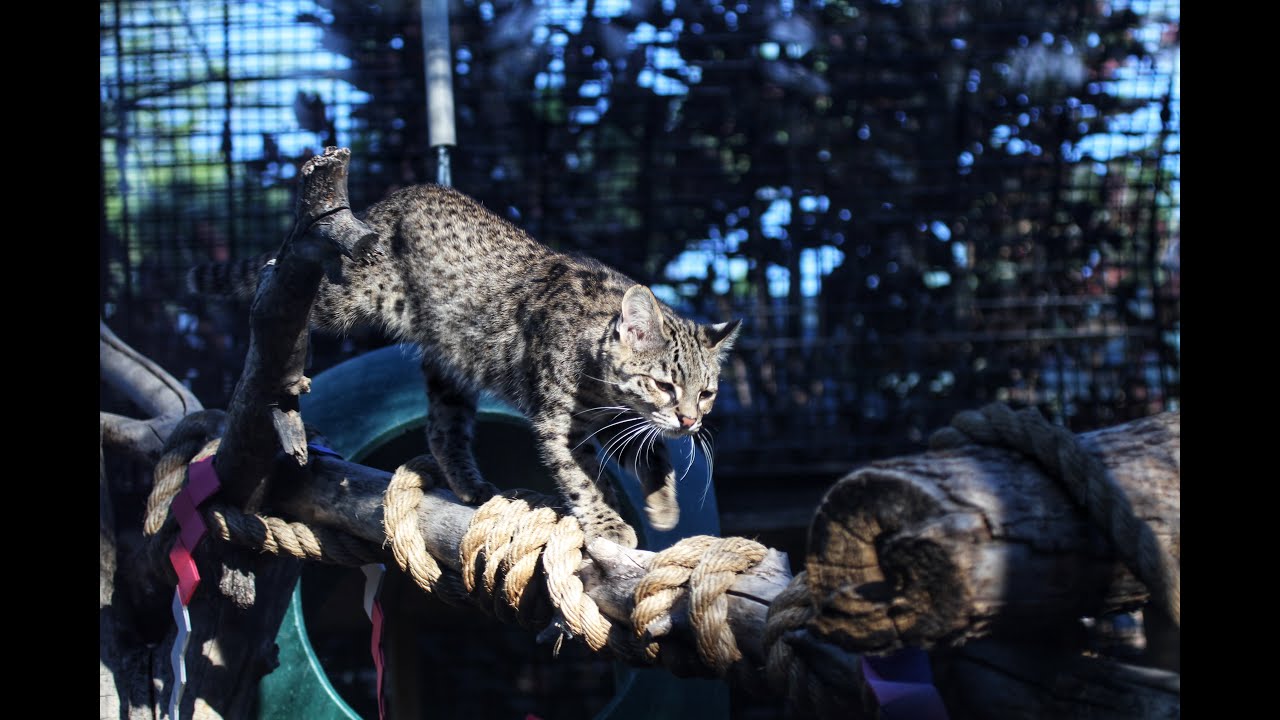- Introduction to Geoffrey’s Cat and its ecological importance.
- Behavioral characteristics and adaptations.
- Conservation strategies in zoo management.
- Wildlife conservation efforts globally.
- The interplay between public education and animal conservation.
Geoffrey’s Cat, scientifically known as Leopardus geoffroyi, is a small but significant wild feline native to the varied landscapes of South America. These intriguing cats inhabit a range of territories from the scrublands of Argentina to the dense forests of Brazil. Their relatively small size does not diminish their ecological significance, as they play a vital role in controlling the populations of small animals, which in turn helps maintain a balanced ecosystem.
Geoffrey’s Cat is distinguished by its distinctive coat, which sports a myriad of dark spots and stripes, ideally suited for camouflage in their natural habitats. They are nocturnal hunters, consistently demonstrating agility and precision in capturing prey. Small rodents and birds form a major part of their diet, but they are also known to hunt aquatic creatures, showcasing adaptability uncommon to many feline species.
Several intrinsic behaviors and adaptations allow Geoffrey’s Cat to thrive in its environment. They display solitary tendencies, unlike some other cat species, which commonly form social groups. This behavior minimizes competition for resources among individuals. Their primarily nocturnal nature helps them avoid larger predators and human threats, further aiding their survival.
A notable adaptability is seen in their climbing skills. Geoffrey’s Cats are adept climbers and swimmers, capable of navigating both trees and water to access prey or evade threats. They possess a powerful build augmented by sharp claws and teeth, enabling them to efficiently hunt and consume a diverse array of prey.
Efforts to conserve Geoffrey’s Cat have become increasingly important, given the growing threats from habitat loss and human encroachment. Institutions such as zoos play a pivotal role in the preservation of the species through carefully managed breeding programs and public education initiatives. These efforts help maintain genetic diversity within captive populations, which is crucial for the species’ long-term survival.
Zoo management focuses on creating environments that closely mimic the cats’ natural habitats. Structured enrichment activities are designed to stimulate natural behaviors, preventing the stagnation often witnessed in animals kept in artificial settings. Enclosures are developed with ample space for climbing, swimming, and hunting behavior, allowing the cats to express their full range of instincts and behaviors.
Wildlife conservation extends beyond zoos, encompassing various strategies deployed globally to protect Geoffrey’s Cat in the wild. Initiatives include protecting their natural habitats from deforestation and fragmentation, which are primary factors contributing to the decline of the species. Conservationists work alongside local communities to develop sustainable land-use practices that benefit both humans and wildlife.
Education and community involvement are integral to the success of conservation efforts. Public education campaigns aim to foster respect and understanding for Geoffrey’s Cats and other wildlife. By increasing awareness of the necessity of conserving these smaller cat species, conservationists hope to harness public support for protection measures.
Conservationists face challenges such as illegal hunting and the pet trade, which threaten Geoffrey’s Cats. Wild felines are often targeted for their distinctive pelts or captured for illegal sale. Enforcement of wildlife protection laws, coupled with stringent penalties for infraction, are essential in curbing these activities.
The role of education in conservation is multifaceted, extending beyond awareness to engage and inspire action. Zoos, with an extensive visitor base, offer a platform for individuals to learn about wildlife conservation firsthand. Educational programs tailored for different age groups elucidate the critical importance of conserving species such as Geoffrey’s Cat, fostering future generations of wildlife advocates.
Moreover, collaborative partnerships between various stakeholders, including governments, conservation organizations, and indigenous communities, are crucial. Such collaboration leads to the development of comprehensive conservation strategies that encompass protection, research, and education efforts, ensuring the long-term viability of Geoffrey’s Cat populations.
In conclusion, Meet Dia, the Geoffrey’s Cat video serves as both an innovative and captivating portrayal of this fascinating species, while aligning with broader goals of ecological education and wildlife preservation. Through strategic conservation initiatives and public engagement, positive outcomes can be achieved in securing the future for not only Geoffrey’s Cat but countless other species teetering on the brink of endangerment.
*****
Source Description
In honor of #WorldGeoffroysCatDay, we’re celebrating Dia and her incredible story of resilience and conservation!
Dia is a reminder of the importance of protecting wildlife and we’re proud to provide her with the care she needs to flourish. Check out the video to hear from Animal Care Specialist Alyssa as she shares more about Dia’s rescue journey from the illegal wildlife trade and how she’s now thriving at DZCA.
#SavingWildlifeTogether #RescueStory #WildlifeConservation #GeoffroysCat #DenverZoo


